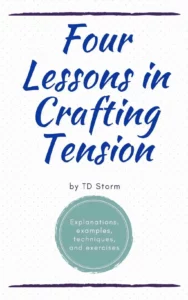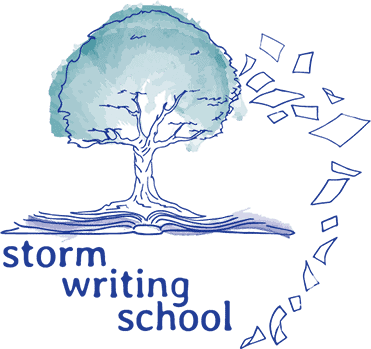Craft Articles
Helping you write the best stories you can write through probing study of craft. Sign up for the Starter Kit course to determine what’s holding you back from being the writer you want to be.
Recent Posts

100 Books Published in 2023 for Your TBR Pile
A mega list of books published in 2023, compiled in a table with info about genre, book description, and the person and tense of the narration.

Verisimilitude: What it is and how it works
Verisimilitude all about getting the reader to suspend disbelief and see realistic depictions of character, setting, and events. But what does it mean for such story elements to be realistic?

Prepping for Beta Reading
Once you’ve found a beta reader for your work, how should you proceed? Some tips here on how to prepare your expectations, your manuscript, and your reader.

Show, Don’t Tell Disambiguation
What’s at the root of the “Show, Don’t Tell” concept, what does showing look like, and how might people abuse showing? An exploration of this oft-cited piece of writing advice.

Delight: The Secondary Source of Reader Engagement
Though tension is maybe the main source or reader engagement, there are several sources of “delight” that help charm the reader and make books memorable.

Varieties of Omniscience
Using an omniscient narrator? It may help to be aware of these two dimensions, which account for the varieties of omniscient approaches.
More Articles
- Novel Structure: An Aggregate Paradigm
- Compendium of Novel Structure Resources
- Escalating Complications
- Why the Hero’s Journey Might Not Be Right for Your Story
- The Two Roles of the Story Beginning
- How to Create a Moving Character Arc
- Use Beats to Move Characters within Scenes
- Earning Story Events
- The Case for Pantsing
- Freytag’s Pyramid
- Turning Points within Scenes
- How a Scene List Can Help Your Revision
- Inciting Incidents
- Centrifugal Forces
- Big Picture Editing
- Stretch Tension to Maximize Suspense
- The Key to Reader Engagement
- How to Create Story Momentum
- Story Momentum Mastery Course
- 3 Techniques for Creating Tension
- The Tension Lab Course
- Creating Romantic/Sexual Tension Course
- Escalating Complications
- The Problem with Show, Don’t Tell: Hyperdetailing
- Urgent Story Questions
- Conflict ≠ Tension
- Subjective Conflict (within readers)
- How to Write Compelling Action
- Theme is Not Optional
- Earning Story Events
- Captivating Protagonists: The Essentials
- The Essence of Standout Characters
- Dramatic Prognosis
- Delight (the secondary source of reader engagement)
- Triangulate Dialogue
- 4 Common Failures in Story Cause/Effect
- Stretch Tension to Maximize Suspense
- Should You Use Synonyms for Said?
- Formatting Character Thoughts
- Scene vs. Summary
- 12 Ways to Be an Invisible Writer
- Sentiment vs. Sentimentality
- The Tension Lab Course
- Creating Romantic/Sexual Tension Course
- Use Beats to Move Characters within Scenes
- The Problem with Show, Don’t Tell: Hyperdetailing
- Psychic Distance: Narrative Distance from Character
- The Pitfalls of Emotional Body Language
- Subjective Conflict (within readers)
- How to Write Realizations, Epiphanies, and Moments of Clarity
- Using Objects to Create More Powerful Stories
- How to Write Compelling Action
- Exposition in Dialogue
- Turning Points within Scenes
- The Two Essentials of Compelling Dialogue
- Orienting the Scene
- Show, Don’t Tell Disambiguation
- 10 Lessons from “Cat Person” on Character Interiority
- Author, Narrator, Character
- Action vs. Information: Convey Info without Stalling the Story
- Juggle External Action and Interiority
- Scene vs. Summary
- Time Digression in Narration
- Page-level Storytelling: Four Ways to Break Down Your Narration
- The True Source of Voice
- The Problem with Show, Don’t Tell: Hyperdetailing
- Psychic Distance: Narrative Distance from Character
- 5 Ways to Express Emotion
- How to Write Realizations, Epiphanies, and Moments of Clarity
- To Filter or Not to Filter
- Show, Don’t Tell Disambiguation
- Story Grammar: Distinguish between Descriptive and Prescriptive Story Advice
- Story Consumption: How to Read like a Writer
- Approaching the Workshop
- Dealing with Rejection and Criticism
- Revision for Haters
- Finding Readers to Help You
- The Case for Pantsing
- How Your Attitude and Approach Toward Habits Can Revitalize Your Writing
- How to Write While You’re Freaking Out
- Breaking Writing Rules
- Two Conflicts: Problems vs. Obstacles
- Author, Narrator, Character
- Why You Need Strong Antagonists in Your Story
- Common Problems in Manuscripts
- The Key to Reader Engagement
- The True Source of Strong Voice
- 3 Techniques for Creating Tension
- 4 Common Failures in Story Cause/Effect
- The 5 Key Elements of Story Course (free)
- Scene vs. Summary
- 12 Ways to Be an Invisible Writer
- Character Arcs
- Beats within Scenes
- Urgent Story Questions
- Conflict ≠ Tension
- Using Objects to Create More Powerful Stories
- How to Write Compelling Action
- Theme is Not Optional
- Earning Story Events
- Irony Is Central to Storytelling
- Turning Points within Scenes
- The Two Essentials of Compelling Dialogue
- Captivating Protagonists: The Essentials
- The Essence of Standout Characters
- Character Mixing Board
- Character Motivation
- Orienting the Scene
- Inciting Incidents
- Dramatic Prognosis

SUBSCRIBE AND GET A FREE EBOOK

